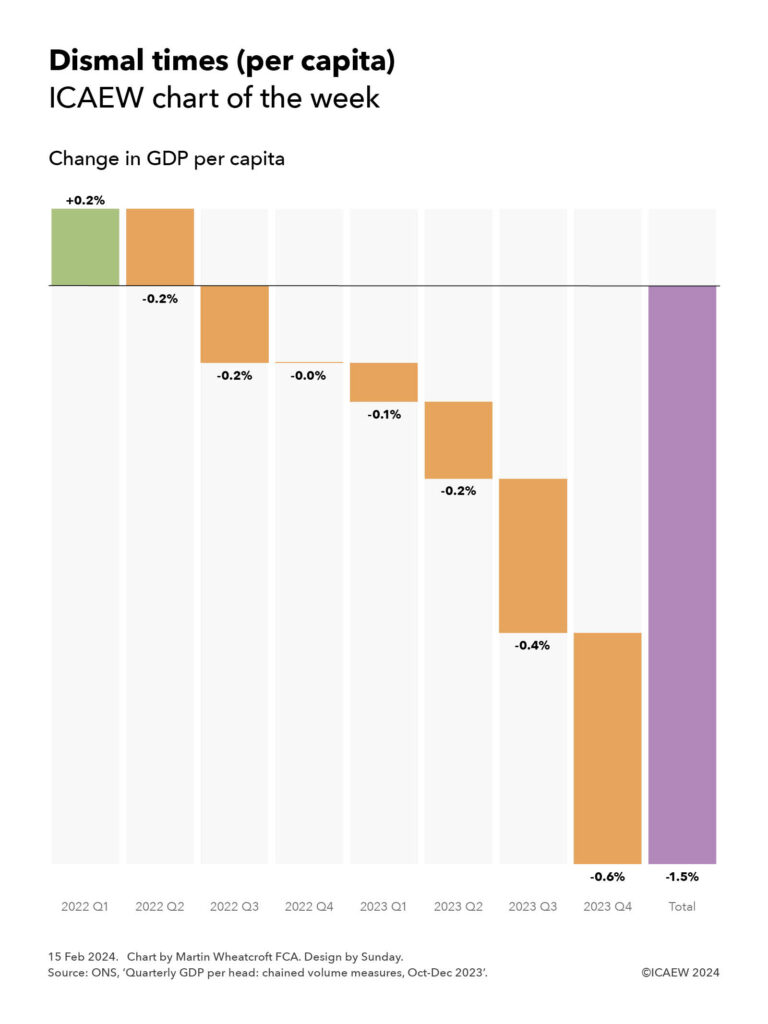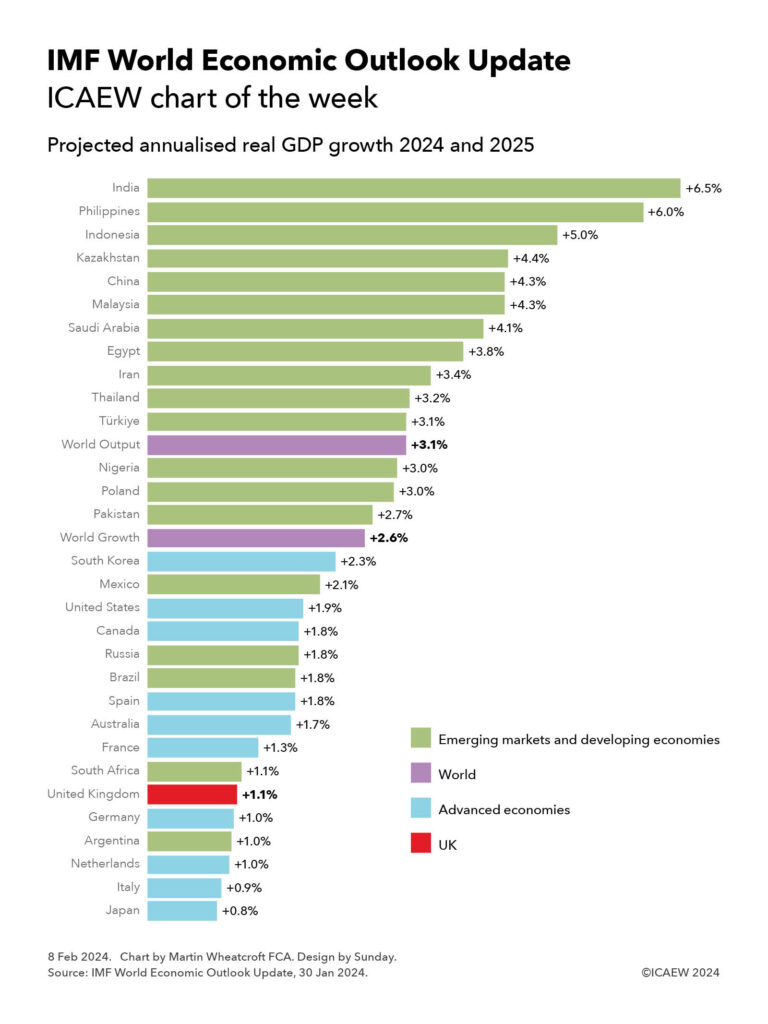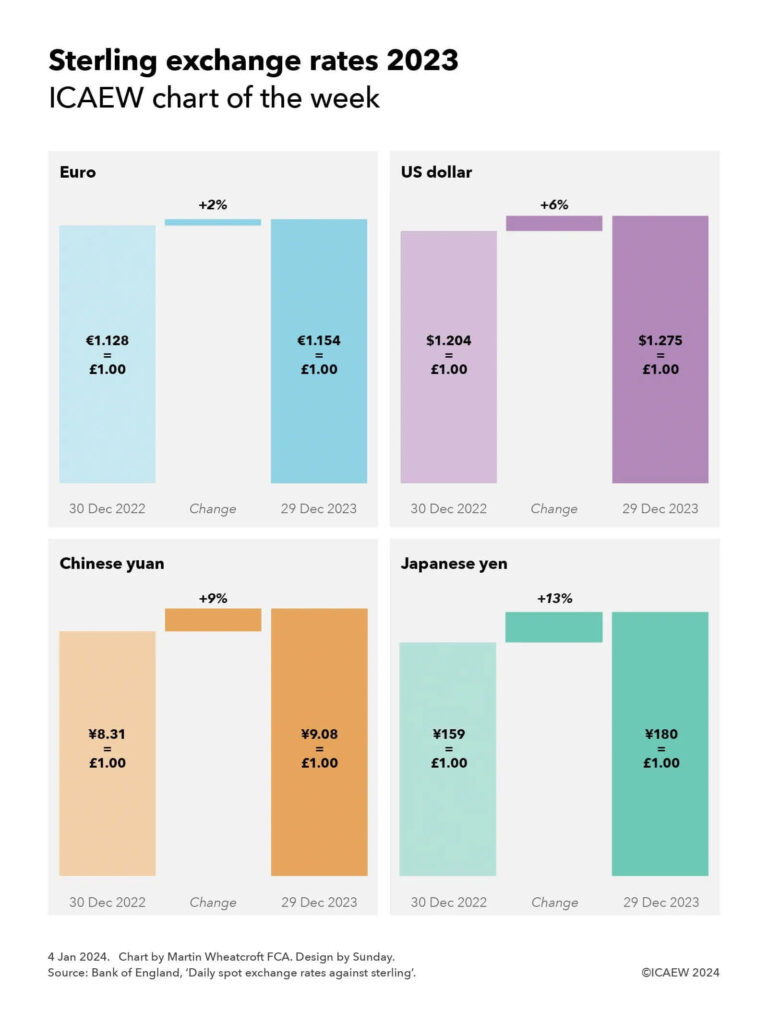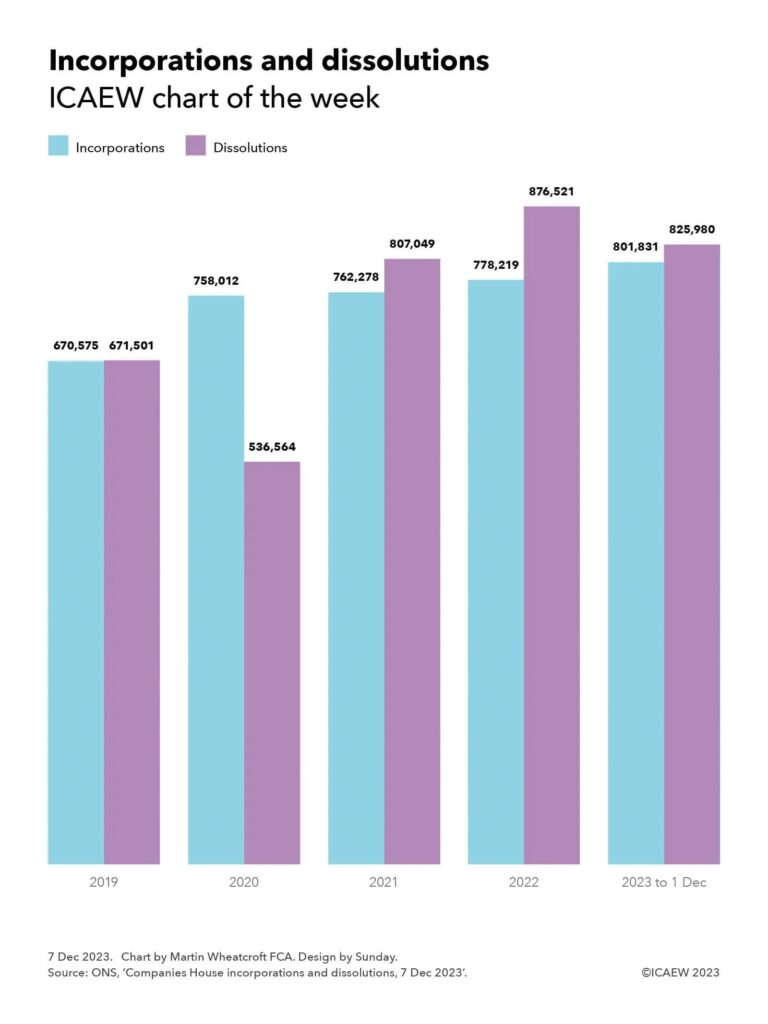Prior month revisions boost public finances despite worse than expected self assessment receipts, as a think tank says tax cuts in the Budget will be sandwiched between tax rises in the years before and after.
The monthly public sector finances for January 2024 reported a provisional surplus for the month of £17bn, slightly less than expected, while at the same time revising the year-to-date deficit down.
The figures, released by the Office for National Statistics (ONS) yesterday, show a cumulative deficit for the first 10 months of the financial year to £97bn, £3bn less than in the same period last year. The year-to-date variance against the Office for Budget Responsibility (OBR)’s Autumn Statement forecast improved from £5bn last month to £9bn this month.
Alison Ring OBE FCA, ICAEW Director for Public Sector and Taxation, said: “Lower self assessment tax receipts than expected in January were offset by revisions to numbers from previous months to improve the overall financial picture.
“This small improvement helps only a little with an extremely weak fiscal position facing the Chancellor as he approaches the Budget, with questions already being asked about whether existing plans to cut public spending in the near term are realistically achievable. Rumours that the Chancellor is thinking about further reductions in public spending to fund tax cuts will therefore need to be balanced with his ability to maintain credibility with debt markets.”
The Resolution Foundation reported that likely net tax cuts in the coming financial year of around £10bn are sandwiched between £20bn of tax rises that have already been implemented in the current financial year – including threshold freezes and the corporation tax rate rise from 19% to 25% – and £17bn in net tax rises that have been pre-announced up to 2027/28 (primarily from threshold freezes and stamp duty land tax).
The think tank’s pre-Budget analysis estimates that the cut in national insurance announced in November plus around £10bn in potential new tax cuts to be announced in the Budget would result in a net reduction in taxes of just under £10bn for 2024/25 after taking account of threshold freezes and other tax changes.
The Resolution Foundation analysis does not take account of the normal pattern that sees governments typically raise taxes in the first Budget after a general election, which is even more likely this time around given what many commentators believe are unrealistic spending assumptions for 2025/26 onwards.
Month of January 2024
Self assessment tax receipts were lower than expected in January 2024, with the fiscal surplus of £17bn for the month coming in at £9bn better than last year but £2bn less than the OBR’s Autumn Statement projection.
Taxes and other receipts amounted to £120bn, up 4% compared with January 2023, while total managed expenditure was £103bn, down 5%.
Public sector net debt as of 31 January 2024 was £2,646bn or 96.5% of GDP, £41bn lower than 31 December but £107bn higher than at the start of the financial year.
Ten months to January 2024
The provisional shortfall in taxes and other receipts compared with total managed expenditure for the first five sixths of the 2023/24 financial year to January 2024 was £97bn, £3bn less than the £100bn deficit reported for the first ten months of 2022/23. This reflected a year-to-date shortfall between tax and other receipts of £901bn and total managed expenditure of £998bn, up 6% and 5% compared with April 2022 to January 2023.
Inflation benefited tax receipts for the first 10 months compared with the same period in the previous year, with income tax up 11% to £224bn and VAT up 6% to £165bn. Corporation tax receipts were up 17% to £85bn, partly reflecting the increase in the corporation tax rate from 19% to 25% from 1 April 2023.
Meanwhile,national insurance receipts were up by just 1% to £148bn as the abolition of the short-lived health and social care levy in 2022/23 offset the effect of wage increases in the current financial year, as well as the cut in national insurance implemented in January.
Council tax receipts were up 6% to £36bn, but stamp duty on properties was down by 25% to £11bn and the total for all other taxes was flat at £137bn as economic activity slowed. Non-tax receipts were up 10% to £95bn, primarily driven by higher investment income and higher interest charged on student loans.
Total managed expenditure of £998bn in the ten months to January 2024 can be analysed between current expenditure excluding interest of £846bn, interest of £105bn and net investment of £47bn, compared with £949n in the same period in the previous year, comprising £810bn, £114bn and £25bn respectively.
The increase of £36bn or 4% in current expenditure excluding interest was driven by a £28bn increase in pension and other welfare benefits (including cost-of-living payments), £18bn in higher central government pay and £10bn in additional central government procurement spending, less £13bn in lower subsidy payments (principally relating to energy support schemes) and £7bn in net other changes.
The fall in interest costs for the ten months of £9bn or 8% to £105bn comprises a £23bn or 50% reduction to £23bn for interest accrued on index-linked debt as the rate of inflation fell, partially offset by a £14bn or 21% increase to £82bn from higher interest rates on variable-rate debt and new and refinanced fixed-rate debt.
The £21bn increase in net investment spending to £47bn in the first ten months of the current year is distorted by a one-off credit of £10bn arising from changes in interest rates and repayment terms of student loans recorded in December 2022. Adjusting for that credit, the increase of £12bn reflects high construction cost inflation amongst other factors that saw a £16bn or 19% increase in gross investment to £101bn, less a £4bn or 8% increase in depreciation to £54bn.
Public sector finance trends: January 2024
![Table with fiscal numbers for the ten months to Jan 2020, Jan 2021, Jan 2022, Jan 2023 and Jan 2024, all in £bn.
Receipts: 685 | 647 | 754 | 849 | 901
Expenditure: (588) | (746) | (686) | (722) | (761)
Interest: (44) | (33) | (55) | (103) | (97)
Net investment: (26) | (51) | (35) | (16) | (37)
[subtotal] Deficit: (61) | (270) | (123) | (108) | (119)
Other borrowing: 3 | (67) | (85) | (8) | (27)
[total] Debt movement: (58) | (337) | (208) | (116) | (146)
Net debt: 1,835 | 2,152 | 2,360 | 2,497 | 2,686
Net debt / GDP: 84.8% | 98.7% | 97.9% | 95.8% | 97.7%](https://martinwheatcroft.com/wp-content/uploads/2024/02/Public-sector-finance-trends-2024-01.jpg)
The cumulative deficit of £97bn for the first 10 months of the financial year is £9bn below the OBR’s November 2023 forecast of £106bn for that same period. The OBR is forecasting deficits of £6bn and £12bn in February and March to result in a full year forecast of £124bn, or £115bn if the £9bn forecast variance persists.
Balance sheet metrics
Public sector net debt was £2,646bn at the end of January 2024, equivalent to 96.5% of GDP.
The debt movement since the start of the financial year is £107bn, comprising borrowing to fund the deficit for the ten months of £97bn plus £10bn in net cash outflows to fund lending to students, businesses and others, net of loan repayments and working capital movements.
Public sector net debt is £831bn more than the £1,815bn reported for 31 March 2020 at the start of the pandemic and £2,108bn more than the £538bn number as of 31 March 2007 before the financial crisis, reflecting the huge sums borrowed over the last couple of decades.
Public sector net worth, the new balance sheet metric launched by the ONS this year, was -£677bn on 31 January 2024, comprising £1,584bn in non-financial assets and £1,047bn in non-liquid financial assets minus £2,646bn of net debt (£303bn liquid financial assets – £2,949bn public sector gross debt) and other liabilities of £662bn. This is a £62bn deterioration from the -£615bn reported for 31 March 2023.
Revisions
Caution is needed with respect to the numbers published by the ONS, which are expected to be repeatedly revised as estimates are refined and gaps in the underlying data are filled.
The latest release saw the ONS revise the reported deficit for the nine months to December 2023 down by £6bn from £119bn to £113bn as estimates of tax receipts and expenditure were updated for better data and the correction of errors in HMRC reporting, while the debt to GDP ratio at the end of December 2023 was revised up by 0.5 percentage points from 97.7% to 98.2% as GDP estimates were updated.
The ONS also revised its estimate for the deficit for the financial year to March 2023, down by £1bn to £129bn for 2022/23.



![Table showing fiscal numbers for the nine months to Dec 2019, 2020, 2021, 2022 and 2023.
Receipts: 597 | 560 | 653 | 733 | 776
Expenditure: (588) | (746) | (686) | (722) | (761)
Interest: (44) | (33) | (55) | (103) | (97)
Net investment: (26) | (51) | (35) | (16) | (37)
[subtotal] Deficit: (61) | (270) | (123) | (108) | (119)
Other borrowing: 3 | (67) | (85) | (8) | (27)
[total] Debt movement: (58) | (337) | (208) | (116) | (146)
Net debt: 1,835 | 2,152 | 2,360 | 2,497 | 2,686
Net debt / GDP: 84.8% | 98.7% | 97.9% | 95.8% | 97.7%](https://martinwheatcroft.com/wp-content/uploads/2024/02/Public-sector-finance-trends-2023-12.jpg)


